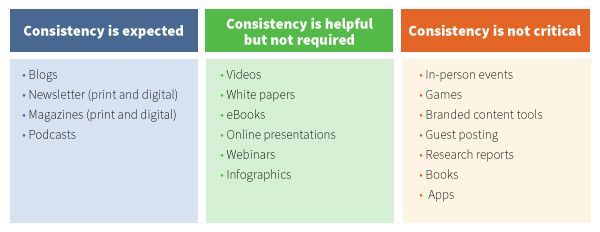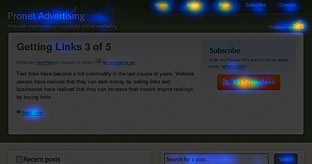First thing’s first, if you’re a regular reader, you know I specialize at content marketing. And I find there’s a lot of confusion about what that entails. Obviously I handle a lot of gaming related projects, because of the industry, but what exactly is content marketing?
Well, it’s all semantics, but content marketing is related to, but different from, all forms of marketing—including advertising, branded content, product marketing, social media, SEO, public relations, influencer marketing, etc.. It is the action of creating and distributing valuable, relevant and consistent content to attract and acquire a clearly defined audience. The goal is to provide value for the company’s audience, while also helping the current clients.
But why am I explaining this, and what does this have to do with games? Because content marketing is a great way to captivate and keep an audience, and who needs that more than game developers?
Other than, you know, singers. And dancers and actors . . .
1) Develop Your Content Marketing Strategy
Before a single tweet, Facebook post, blog post, or anything else, your objective is to think of your marketing goal. What are you hoping to gain from all of this marketing? It could be more players, or it could be an increase in player retention, or both. It could be a more engaging community too. What is your end goal?
From there, think of a business plan for content marketing. What do you want to do and how does that correlate with your goals? It helps to think of your audience here. They have needs and you can meet them as a part of your marketing.
And don’t be afraid to be personal about it either! Within limits, of course. Consider your brand story and determine what makes it unique. What stories are there to tell, and how can your audience learn from it all, or connect with you because of it?
Once you detail the specifics, you can decide what channels work best for your needs. Remember, every channel is different and caters to different types of people. Pay attention to what channels your audience uses regularly, and plan with this in mind.
If you need extra help, consider Hubspot’s guide on the subject. It’s jam-packed with valuable information that makes this step super easy.
2) Be Realistic About Your Time
There are various forms of marketing tactics, from guest posting to creating white papers and podcasts. However these forms all vary in scope, length, content, and therefore, time. Now, time is money. There is only so much of it to go around, and for your average developer, even more so. So, first thing is first – what takes the longest?

This graphic by the Content Marketing Institute, a resource for industry leaders and newbies alike, explains it all easily. Consistency is key, and for certain formats more so. Before you solidify your marketing plan, make sure you’re aware of how demanding it will be.
Likewise, think about your target audience. What would they enjoy the most? Find the mix that works well with your schedule, and still makes your audience happy.
3) Getting Social
Once the planning and researching is done, it’s time to officially get started. You will need to make your accounts as branded and pristine as possible, to be in-keeping with your game studio, and then you’ll need to talk to people on social media, your blog, forums, etc.
For starters, use your game studio logo in your website, and all social media channels you have. Make sure headers are graphic designed with the brand in mind. If you don’t have that skillset, outsource if you can, otherwise opt for colors that match. Just make sure that you don’t overdo it all. Brand pulsing, a method of obtrusively weaving brand images throughout an ad increases viewership by about 20%, while overly prominent branding with brand logos on the screen lead to a decline in engagement. People don’t like feeling like they’re being persuaded to purchase something!
Your website needs to be easy to read and clearly organized in a way that puts your best content on the front page, right at the top. There should be a visible menu with clearly labeled pages (about, contact, media, etc).
More so, there should be a blog that you update at least once per week. Google likes content that is regularly updated; it’s a great way to increase SEO.
Assuming all of the appearances are taken care of, and everything reflects your studio’s brand, you’ll begin updating your social media. Listen to your audience and understand what they are all about. What game mechanics do they praise, and what do they feel requires more work? What content do they engage with the most, is it screenshots and trailers, or is it update and patch news?
Researching your audience is key, because you’ll be seeding your blog content over to social media, to distribute it. You have to make sure that you’re delivering content that they want/need, not just something random they’ll scroll past. In order to have an impact, you have to optimize what you do and how you do it. Remember: high quality content and effective distribution.
4) Test & Alter
We’ve said it before, marketing is a science. That applies for all types of marketing. You’ll try things, realize they don’t work for that particular game, and then move onto the next approach. What works for one game may not work for another. But it just might. You don’t know for sure until you try. Trying and altering is the name of the game.
With that in mind, you’ll need to find a way to track your efforts, to see if your marketing approach is working. This means you will need metric tracking tools. Some are free, like Google Analytics (user behavior data, demographics, what browsers they use, even the size of computer monitor they’re using). Others are paid, like CrazyEgg ($9+/month). The thing with CrazyEgg to consider is that it’s a heat mapping system that lets you see what users are gravitating to on your website, which is about 489,285,284% useful.

Source: Bplans
Other web tracking tools to use are Moz (paid), and Compete, with free and paid options.
If you need help with the process, consider documenting all the content you’re publishing on every platform. If you’re limited on time, or want to get your feet wet first, conduct tests to see what hashtags lead to better engagement on Twitter, or which blog posts get the most engagement.
From there, decide what you want to learn from this step. What are you trying to understand from your audience? It could be what content they find the most relatable, or what they find the most entertaining. Maybe they barely say anything at all about pictures of your team’s BBQ, but they love it when you post some behind-the-scenes videos on YouTube.
Knowing what to look for will clarify what metrics to pay attention to. For instance, you might be interested in seeing how many people subscribe to your YouTube channel after watching a newly posted video. This is known as a key performance indicator (KPI).
5) Build Your Reputation
Being an indie developer doesn’t mean you have to be unknown. There is an ever-expanding indie community out there, filled with other developers and players alike. Connecting with others is highly encouraged, as it can help your reputation, and facilitate help.
For instance, you might be able to guest post on someone’s dev blog if your content is relevant to their overall messaging. You might also suggest a resource, such as your game itself, as an example for something previously written in one of their posts.
Of course, when you do this, pay it forward. If they have a resource for you, or want to guest post, work something out. Making friends in the industry never hurt anyone. The more people you know and help, the more opportunity you have to get mentions and spread the word about your studio and games.
6) Be Human

Naughty Dog. Source: Gameplanet
Remember when we said people don’t like feeling pushed to buy things? Persuading people comes off as spammy, pushy, or even salesman-like. Avoid this at all costs. You’re a developer, and you have a game you want people to play, sure, but hold it right there. You’re a developer and you have a game. It may not be so remarkable for you anymore, but once upon a time, saying that made you feel like you were living your dream. Like you were on top of the world!
Bring that back. That magic should never leave, and in fact, it’s that magic that sells more games. Being starry-eyed and human makes you approachable. Suddenly it’s not some random salesman trying to sell a game anymore.
Que the king of humanistic marketing: Naughty Dog. The team loves making behind-the-scenes vlogs whenever they come out with new games. They show the developers, interview key designers and creative leads, and then show a bit of what their process looks like. The videos are very well made, tying into the Naughty Dog brand, but don’t slam it in your face.
Take a look. Nolan North is in it. You’re welcome.
Getting Started
Developers tell me how intimidating marketing is all the time. They don’t know where to begin, or why. Oftentimes, they get caught up in their own thoughts and overthinking it all. So take it from me, someone who does this 40 hours a week: it’s all trial and error, and you’ll learn what works for your brand as you go. There is no right or wrong way to go about it, but there are a few things to consider (see above) to help streamline the process and make it less painful. Anyone can tweet about their cat and call it a day, but that’s not marketing.
Most of all, remember you’re a developer before everything else. If you legitimately do not have time, consider outsourcing this task. If you do have time, but lack confidence, try getting your feet wet a little. Confidence is built through experience. Only by doing it will you get better and more aware of what your audience wants and needs.
Best of luck!
If you enjoyed this article, feel free to retweet it! We love making new friends here at Black Shell Media, so don’t be a stranger.
